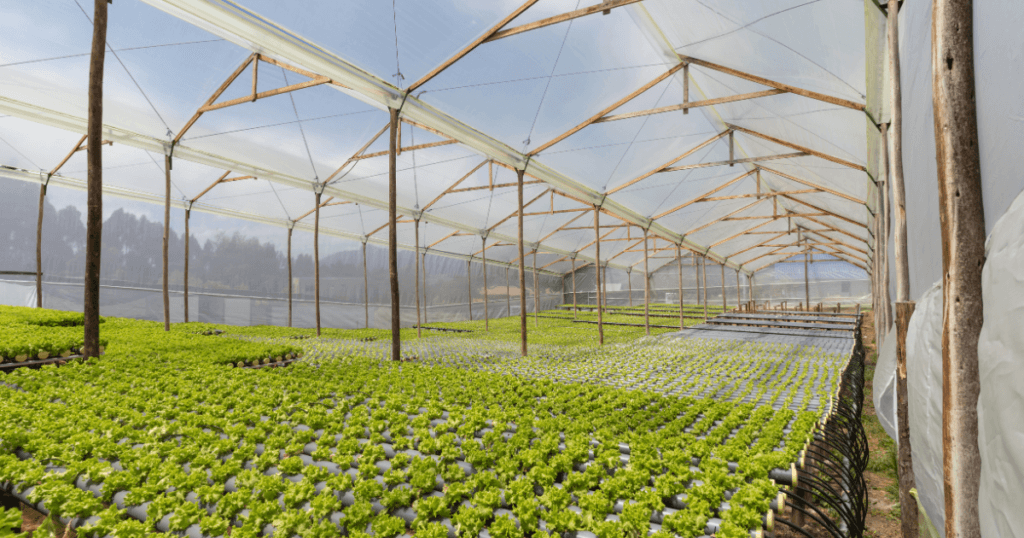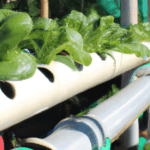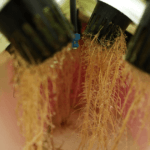The Best Crops for Indoor Farming

Power up your indoor farming with these high-yield crops for maximum productivity.
Indoor farming has gained significant popularity recently due to its numerous advantages, such as year-round cultivation, controlled environments, and efficient space utilization. Whether you’re a beginner or an experienced indoor farmer, choosing the right crops for your indoor farm is crucial to ensure a successful and bountiful harvest. This article will explore some of the best crops suited for indoor farming, focusing on their growth requirements, yieldThe amount of crop or harvest produced from a given area or ... More potential, and overall profitability. Let’s dive in!
Table of Contents
Benefits of Indoor Farming
Before we delve into the specific crops, let’s take a moment to appreciate the advantages of indoor farming. By cultivating crops indoors, farmers can overcome the limitations of traditional outdoor farming and unlock a range of benefits, including:
- Year-round cultivation: Indoor farming allows for year-round production, eliminating the seasonal constraints associated with traditional farming methods.
- Controlled environments: With indoor farming, you have complete control over environmental factors such as temperature, humidity, light, and nutrient levels, optimizing plant growth and minimizing the risk of pests and diseases.
- Optimal space utilization: Indoor farming offers vertical growing systems, hydroponics
 A soilless cultivation method where plants are grown in nutr... More, and other innovative techniques that maximize space utilization, making it suitable for urban areas or regions with limited arable land.
A soilless cultivation method where plants are grown in nutr... More, and other innovative techniques that maximize space utilization, making it suitable for urban areas or regions with limited arable land. - Reduced water usage: By utilizing hydroponics
 A soilless cultivation method where plants are grown in nutr... More or aeroponics
A soilless cultivation method where plants are grown in nutr... More or aeroponics A hydroponic system where plant roots are suspended in... More, indoor farming minimizes water consumption compared to conventional soil-based farming, thus promoting sustainable agricultureA farming approach that aims to minimize negative impacts on... More.
A hydroponic system where plant roots are suspended in... More, indoor farming minimizes water consumption compared to conventional soil-based farming, thus promoting sustainable agricultureA farming approach that aims to minimize negative impacts on... More. - Higher yieldThe amount of crop or harvest produced from a given area or ... More potential: The controlled conditions in indoor farms create an ideal crop environment, resulting in higher yields and faster growth rates.
Now that we understand the benefits let’s explore some of the best crops that thrive in indoor farming setups.
Herbs and Leafy Greens
Basil: Aromatic and Versatile
Basil, a popular herb in culinary traditions worldwide, is an excellent choice for indoor farming. Its aromatic leaves and versatility make it a favourite among chefs and home cooks alike. Basil prefers warm temperatures between 70-90°F (21-32°C) and requires ample sunlight or artificial light for optimal growth. With regular pruning, you can encourage bushier growth and a continuous harvest. From classic pesto to refreshing summer salads, basil adds a delightful flavour to various dishes.
Spinach: Nutrient-rich and Quick to Harvest
Spinach is a nutritious leafy green that thrives in indoor environments. Packed with vitamins, minerals, and antioxidants, spinach is a superfood that offers numerous health benefits. It prefers cooler temperatures between 50-75°F (10-24°C) and requires around 12 hours of light daily. You can harvest young spinach leaves in as little as three weeks, making it an ideal crop for quick and frequent harvests. Add fresh spinach to salads, smoothies, or sauté for a nutrient-packed side dish.
Lettuce: Crisp and Refreshing
Lettuce is a staple in salads and sandwiches and flourishes in indoor farms. Its shallow root system suits hydroponic A soilless cultivation method where plants are grown in nutr... More or nutrient film technique (NFT)A hydroponic system where a thin film of nutrient solution f... More systems. Lettuce prefers cooler temperatures between 45-75°F (7-24°C) and requires adequate moisture and lighting. Regular harvests allow you to enjoy a continuous supply of fresh, crisp lettuce throughout the year. From vibrant green leaf lettuce to crunchy romaine, there are various varieties for your indoor farm.
A soilless cultivation method where plants are grown in nutr... More or nutrient film technique (NFT)A hydroponic system where a thin film of nutrient solution f... More systems. Lettuce prefers cooler temperatures between 45-75°F (7-24°C) and requires adequate moisture and lighting. Regular harvests allow you to enjoy a continuous supply of fresh, crisp lettuce throughout the year. From vibrant green leaf lettuce to crunchy romaine, there are various varieties for your indoor farm.
Fruiting Crops
Tomatoes: Juicy and Flavorful
Tomatoes are one of the most popular crops for indoor farming due to their exceptional taste and versatility in various culinary creations.
They thrive in warm temperatures between 70-85°F (21-29°C) and require consistent lighting for at least 12-16 hours a day. Tomatoes can be grown in containers or hydroponic A soilless cultivation method where plants are grown in nutr... More systems, allowing for efficient space utilization. Pruning and providing support for the plants are essential to ensure proper growth and fruit development. From cherry tomatoes to beefsteak varieties, there are options to suit every preference. Enjoy picking ripe, juicy tomatoes straight from your indoor farm.
A soilless cultivation method where plants are grown in nutr... More systems, allowing for efficient space utilization. Pruning and providing support for the plants are essential to ensure proper growth and fruit development. From cherry tomatoes to beefsteak varieties, there are options to suit every preference. Enjoy picking ripe, juicy tomatoes straight from your indoor farm.
Peppers: Vibrant and Spicy
Peppers, whether bell peppers or hot chilli peppers, are another fantastic choice for indoor farming. Their vibrant colours and spicy flavours add a delightful kick to various dishes. Peppers prefer warm temperatures between 70-85°F (21-29°C) and require ample sunlight or artificial light for at least 10-12 hours daily. Regular pruning and providing support are essential to promote healthy growth and prevent branches from breaking under the weight of the fruits. Choose pepper varieties that suit your taste preferences and culinary needs, from mild and sweet bell peppers to fiery habaneros.
Strawberries: Sweet and Tangy Treats

Growing strawberries indoors allows you to enjoy these sweet and tangy treats throughout the year. Strawberries thrive in cooler temperatures between 60-75°F (15-24°C) and require around 12-16 hours of lighting per day. Choose day-neutral or everbearing varieties for continuous fruiting. Hydroponic A soilless cultivation method where plants are grown in nutr... More or vertical growing systems are particularly suitable for strawberries due to their space-saving nature. Imagine plucking ripe strawberries from your indoor farm and savouring their freshness in salads and desserts or enjoying them as a healthy snack.
A soilless cultivation method where plants are grown in nutr... More or vertical growing systems are particularly suitable for strawberries due to their space-saving nature. Imagine plucking ripe strawberries from your indoor farm and savouring their freshness in salads and desserts or enjoying them as a healthy snack.
Microgreens: Nutrient-Packed Powerhouses
MicrogreensYoung, tender plants are harvested at an early stage of grow... More, the young seedlings of various vegetables and herbs, have gained immense popularity recently due to their concentrated nutrient content and culinary versatility. These tiny greens are harvested when only a few inches tall, making them an excellent choice for indoor farming. They grow quickly, typically ready for harvest within 1-3 weeks, depending on the variety. MicrogreensYoung, tender plants are harvested at an early stage of grow... More are rich in vitamins, minerals, and antioxidants, and they add a burst of flavour and vibrant colour to salads, sandwiches, and other dishes. Popular microgreensYoung, tender plants are harvested at an early stage of grow... More include broccoli, radish, sunflower, and cilantro.
Additional Crops for Indoor Farming
In addition to the previously mentioned crops, several other options can thrive in indoor farming setups. Let’s explore more crops to expand the variety of your indoor farm:
Cucumbers: Crisp and Refreshing
Cucumbers are a popular choice for indoor farming due to their refreshing taste and versatility in salads, sandwiches, and pickling. For optimal growth, they require warm temperatures between 70-85°F (21-29°C) and high humidity levels. Cucumber vines tend to be sprawling, so supporting such as trellises or stakes is essential to ensure proper growth and fruit development. Enjoy homegrown cucumbers’ crisp texture and cool flavour from your indoor farm.
Beans: Nutritious and Easy to Grow
Beans, including bush beans or pole beans, are nutritious and relatively easy to grow indoors. They prefer temperatures between 60-80°F (15-27°C) and require ample sunlight or artificial light for at least 6-8 hours daily. With their climbing nature, pole beans can be trained on trellises or vertical structures, making them ideal for space-efficient growing systems. Harvest the young and tender pods for a delicious addition to your meals.
Carrots: Sweet and Colorful
While carrots are traditionally grown in soil, they can also be cultivated successfully in indoor farming setups. Choose shorter varieties or baby carrots that are well-suited for container gardening. Carrots prefer cooler temperatures between 60-70°F (15-21°C) and require well-draining growing media. Adequate lighting is crucial for their growth and development. Enjoy the sweetness and vibrant colours of homegrown carrots from your indoor farm.
Mushrooms: Unique and Nutrient-Dense
Mushrooms offer a unique opportunity for indoor farming, as they don’t require light and can be grown in dark environments. Varieties such as oyster mushrooms or shiitake mushrooms are popular choices for indoor cultivation. They need specific growing conditions, including a substrate or growing medium, appropriate humidity levels, and temperature control. With their distinct flavours and versatile culinary uses, mushrooms can be a fascinating addition to your indoor farm.
Micro Tomatoes: Tiny and Flavorful
Micro tomatoes, also known as dwarf or compact tomato varieties, are specifically bred for small-space cultivation, making them perfect for indoor farms. These tiny tomatoes offer intense flavours and can be grown in containers or hanging baskets. They require similar conditions to regular tomatoes, including warm temperatures, consistent lighting, and vine support. Enjoy the abundance of bite-sized, flavorful tomatoes from your indoor farm.
Chillies: Spicy and Vibrant
For spice enthusiasts, growing chillies on your indoor farm can be a thrilling experience. Varieties like jalapeños, cayenne peppers, or Thai chillies can add fiery flavours to your culinary creations. Chillies prefer warm temperatures between 70-85°F (21-29°C) and require ample sunlight or artificial light for at least 10-12 hours daily. With their compact size, they can be grown in containers or hydroponic A soilless cultivation method where plants are grown in nutr... More systems. Harvest ripe chillies and add a kick to your favourite dishes.
A soilless cultivation method where plants are grown in nutr... More systems. Harvest ripe chillies and add a kick to your favourite dishes.
Strawberries: Fragrant and Juicy
We mentioned strawberries earlier, but their suitability for indoor farming is worth emphasizing. Aside from the traditional varieties, specific cultivars are bred for indoor cultivation, such as “Albion” or “Seascape.” These varieties are day-neutral, meaning they can produce fruit consistently regardless of the day length. With their fragrant aroma and sweet, juicy berries, indoor-grown strawberries can be a delightful addition to your indoor farm.
Radishes: Crunchy and Quick to Harvest
Radishes are versatile and fast-growing crops that can thrive in indoor farming setups. They prefer cooler temperatures between 50-70°F (10-21°C) and require around 6-8 hours of light daily. Radishes have a short growing cycle, typically ready for harvest within 20-30 days. Their crunchy texture and peppery flavour make them an excellent addition to salads, sandwiches, or garnish. Explore different radish varieties, including red radishes, daikon radishes, or watermelon radishes, to add colour and flavour to your indoor farm.
Herbs: Fragrant and Flavorful
Expand your herb collection in your indoor farm by including rosemary, thyme, mint, or parsley. These herbs offer distinct flavours and aromas that can elevate your culinary creations. Most herbs prefer temperatures between 60-75°F (15-24°C) and require around 6-8 hours of light daily. Ensure proper drainage and provide adequate airflow to prevent humidity-related issues. Harvest fresh herbs as needed and infuse your dishes with delightful flavours.
Remember, each crop has specific temperature, lighting, humidity, and growing media requirements. Researching and understanding the needs of the crops you choose for your indoor farm is essential to create the best-growing conditions and maximizing their potential.
By incorporating a diverse selection of crops in your indoor farm, you can enjoy various fresh produce, enhance your culinary experiences, and reap the benefits of homegrown goodness.
Conclusion
Indoor farming provides a fantastic opportunity to cultivate a wide range of crops regardless of the external factors and limitations associated with traditional agriculture. By carefully selecting the right crops for your indoor farm, considering their growth requirements and yieldThe amount of crop or harvest produced from a given area or ... More potential, you can enjoy a bountiful harvest of fresh and flavorful produce throughout the year. The options are vast, from herbs and leafy greens to fruiting crops and nutrient-packed microgreensYoung, tender plants are harvested at an early stage of grow... More. Experiment with different varieties, techniques, and growing systems to find what works best for you and maximize the potential of your indoor farm.
So, power up your indoor farming journey with these best crops, and enjoy the benefits of fresh, homegrown produce that will make your taste buds dance with delight!
Frequently Asked Questions – Best Crops for Indoor Farming
Q: What are some of the best crops for indoor farming?
A: Some of the best crops for indoor farming include:
- Herbs like basil, mint, parsley, and thyme.
- Leafy greens such as lettuce, spinach, kale, and Swiss chard.
- MicrogreensYoung, tender plants are harvested at an early stage of grow... More like radish, broccoli, and sunflower shoots.
- Strawberries, which can thrive in indoor environments.
- Tomatoes, especially compact varieties bred for indoor cultivation.
Q: What are the advantages of growing herbs indoors?
A: Growing herbs indoors offers several advantages, such as:
- Convenience: Having fresh herbs readily available in your kitchen.
- Flavor: Homegrown herbs often have superior taste compared to store-bought ones.
- Aesthetics: Indoor herb gardens can enhance the visual appeal of your living space.
- Accessibility: You can harvest herbs throughout the year, regardless of the season.
Q: Can I grow fruiting crops like tomatoes indoors?
A: Yes, you can successfully grow fruiting crops like tomatoes indoors. Opt for compact or dwarf varieties specifically bred for indoor cultivation. Ensure they receive adequate light, proper support, and regular pollinationThe transfer of pollen from the male reproductive parts of a... More (either by hand or with the help of fans or gentle shaking).
Q: What are microgreens, and why are they suitable for indoor farming?
A: MicrogreensYoung, tender plants are harvested at an early stage of grow... More are young, tender plants harvested at an early stage of growth. They are highly suitable for indoor farming due to the following reasons:
- Short growth cycle: MicrogreensYoung, tender plants are harvested at an early stage of grow... More can be harvested in as little as 1-3 weeks, allowing for quick and continuous production.
- Space efficiency: They require minimal space and can be grown in trays or shallow containers.
- High nutritional value: MicrogreensYoung, tender plants are harvested at an early stage of grow... More are packed with vitamins, minerals, and antioxidants, making them a nutritious addition to meals.
- Wide variety: There are numerous microgreen varieties available, including radish, broccoli, sunflower, and more.
Q: What factors should I consider when choosing crops for indoor farming?
A: When selecting crops for indoor farming, consider the following factors:
- Light requirements: Different crops have varying light needs, so ensure you can provide the appropriate lighting conditions.
- Space availability: Determine the amount of space you have and choose crops that fit within that area.
- Growth cycle: Some crops mature faster than others, so consider the time it takes for a crop to reach harvest stage.
- Personal preference: Grow crops that you enjoy eating and have a use for in your daily cooking.
Resources related to the best crops for indoor farming
- https://medium.com/@MarkCrumpacker/7-of-the-best-crops-for-vertical-farming-c83a2e88b1a8
- https://www.agrifarming.in/profitable-crops-for-vertical-farming-a-full-guide
- https://www.bbc.com/future/article/20230106-what-if-all-our-food-was-grown-in-indoor-vertical-farms
- https://www.canr.msu.edu/floriculture/uploads/files/crops%20for%20indoor%20farming.pdf